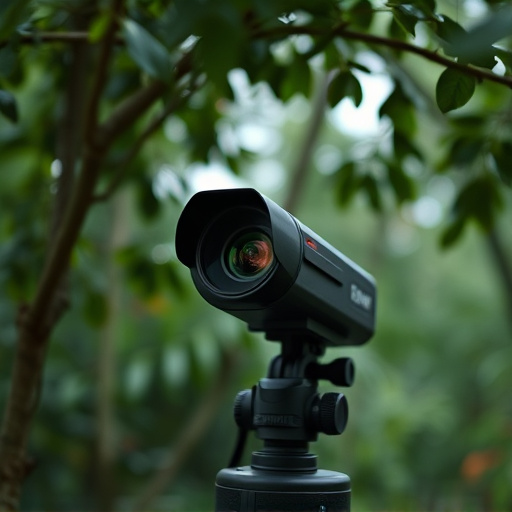Battery Operated Hidden Childcare Cameras offer remote monitoring with HD video, night vision, and motion alerts via user-friendly apps for parental peace of mind. Strategic placement near play areas ensures discreet surveillance. RF detectors can uncover hidden cameras, requiring a systematic scan. Legal considerations, consent, and transparency are vital when using these cameras to safeguard children while respecting privacy.
Uncover hidden threats with our comprehensive guide on detecting battery-operated hidden childcare cameras. This tutorial delves into crucial aspects, from understanding the technology behind these devices to identifying discreet placement spots. We equip parents and caregivers with essential knowledge on selecting effective detection tools, specifically Radio Frequency (RF) detectors. Learn the step-by-step process of conducting an RF detector sweep and discover legal considerations for ensuring a safe and private environment for children.
- Understanding Battery-Operated Hidden Cameras
- Identifying Potential Placement for Childcare
- Selecting the Right Detection Tools: RF Detectors
- Conducting a Sweeping RF Detector Tutorial
- Ensuring Privacy and Legal Considerations
Understanding Battery-Operated Hidden Cameras
Battery-operated hidden cameras, especially those designed for childcare, have become increasingly popular due to their convenience and discreteness. These cameras run on small, long-lasting batteries, allowing them to operate silently and unseen for extended periods. They’re ideal for parents who want to keep an eye on their children’s activities while they’re away, ensuring their safety and well-being.
When considering battery-operated hidden childcare cameras, it’s crucial to look for models with features like HD video quality, night vision capabilities, and motion detection alerts. These ensure clear and detailed footage, even in low-light conditions, and help you stay informed about any unusual activity. Additionally, easy-to-use mobile apps that allow remote access further enhance their appeal, giving parents peace of mind from anywhere at any time.
Identifying Potential Placement for Childcare
When setting up a hidden camera for childcare, identifying potential placement spots is crucial. Areas near toys, play areas, or where caregivers frequently interact with children are ideal. Battery-operated hidden childcare cameras offer discreet monitoring, allowing parents to ensure safety and peace of mind without drawing attention. Look for small, unobtrusive devices designed specifically for these situations, ensuring they blend in with the environment while providing clear, reliable video feed.
Selecting the Right Detection Tools: RF Detectors
When it comes to detecting hidden cameras, particularly those used in childcare settings, selecting the right tools is paramount. Among them, RF (radio frequency) detectors stand out for their ability to uncover devices operating wirelessly. These devices are especially useful against battery-operated hidden childcare cameras, which often utilize radio waves for transmission and power.
RF detectors work by scanning a location for any active RF signals, allowing users to identify potential hidden cameras. They come in various forms, from handheld wands to wearable devices, offering flexibility for different scenarios. The right choice depends on the size of the area to be searched, time constraints, and the specific frequency ranges known or suspected to be used by the hidden camera system.
Conducting a Sweeping RF Detector Tutorial
Conducting a sweeping RF detector tutorial for hidden cameras, especially those that are battery operated and commonly used in childcare settings, is an essential step to ensure comprehensive security. These cameras, often discreetly placed, rely on wireless signals to transmit footage, making them susceptible to detection by specialized devices.
A RF (Radio Frequency) detector sweeps through various frequencies, helping users identify the specific signals emitted by hidden cameras. This process involves a systematic approach: first, understand your detector’s capabilities and range; then, methodically scan areas of concern, including walls, doors, and furniture, to uncover any active wireless devices. By following this tutorial, parents and caregivers can gain valuable insights into protecting their children’s safety in childcare environments.
Ensuring Privacy and Legal Considerations
When setting up a battery-operated hidden childcare camera, it’s paramount to prioritize privacy and legal considerations. These devices should only be used with explicit consent from all parties involved, especially since many regions have strict regulations regarding surveillance and recording, particularly in private spaces like homes and daycares.
Always ensure that the cameras are clearly visible or labeled to avoid any ambiguity. Respecting privacy isn’t just about adhering to the law; it’s also about fostering trust between caregivers, parents, and children. Using these devices responsibly can enhance safety without compromising individual liberties.
In conclusion, understanding how to detect battery-operated hidden childcare cameras is an essential step in ensuring the safety and privacy of your children. By identifying potential placement areas and selecting the right RF detection tools like sweep sensors, you can actively navigate this modern challenge. Always remember to prioritize legal considerations and respect privacy rights while fostering a secure environment for folks involved in childcare.
